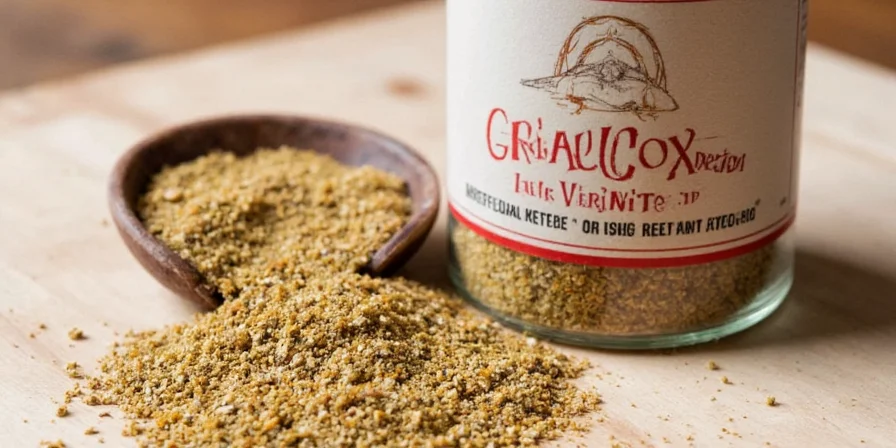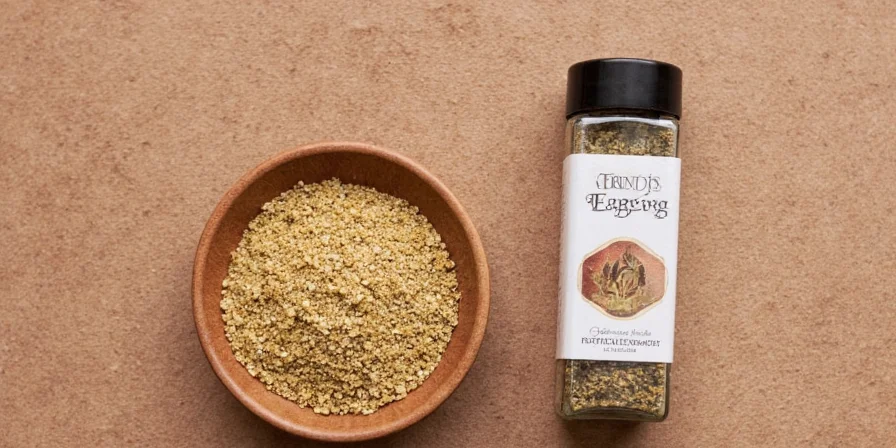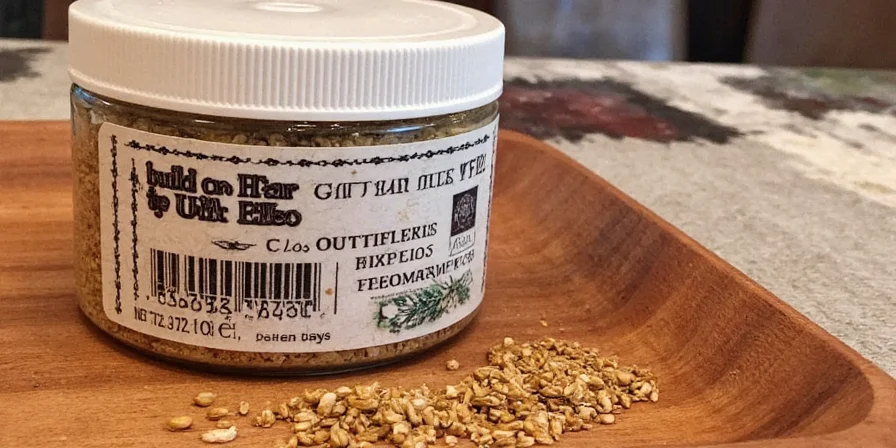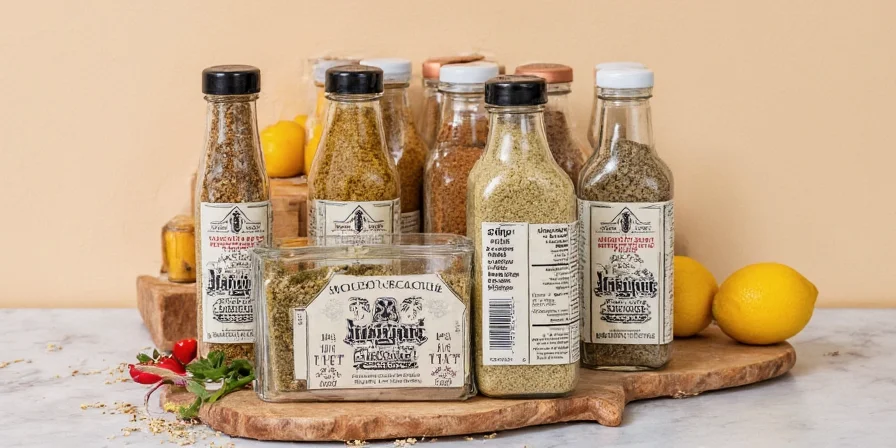What's Inside Greek Seasoning – And Why It’s the MVP of Your Spice Rack 🏆
If you’ve ever tasted a warm, herbaceous breeze from the Mediterranean—without leaving your kitchen—you can thank Greek seasoning. This magical blend is more than just a jumble of dried leaves and powders; it’s a culinary passport to sun-soaked islands, grilled meats, and rustic salads.
In this post, we’ll break down what exactly goes into Greek seasoning, explore its flavor profiles, compare different regional variations, and share tips on how to use it like a pro. Whether you're a seasoned chef or a curious foodie, you'll walk away ready to season with confidence.
Table of Contents
- What Exactly Is In Greek Seasoning?
- The Core Ingredients: Herbs, Spices & Magic Dust
- Regional Twists: Not All Greek Seasonings Are Created Equal
- How to Use Greek Seasoning Like a Pro
- DIY Greek Seasoning Recipe You Can Make at Home
- Health Benefits: More Than Just Flavor
- Visual Comparison Table: Common Greek Seasoning Blends
- Final Thoughts & Pro Tips

What Exactly Is In Greek Seasoning?
The beauty of Greek seasoning lies in its simplicity—and versatility. While there’s no one-size-fits-all formula, most versions include a core group of herbs and spices that reflect Greece’s rich agricultural landscape and culinary traditions.
Think of it as a symphony orchestra: each ingredient plays a role, and when combined, they create harmony on your plate. Let’s dig into the cast of characters:
Core Ingredients in Greek Seasoning
- Oregano – The heart and soul of Greek seasoning
- Thyme – Adds earthy warmth and depth
- Marjoram – Softer, sweeter cousin of oregano
- Rosemary – Bold and aromatic, perfect for roasts
- Parsley – Freshness booster, especially in green blends
- Dried Garlic – Umami-packed punch
- Salt – Brings out all the flavors
- Black Pepper – Balances sweetness with heat
- Optional Additions: Red pepper flakes, lemon zest, mint, basil, or even fennel seeds depending on region or recipe.

Regional Twists: Not All Greek Seasonings Are Created Equal
Just like dialects across Greece, Greek seasoning varies by island and mainland region. Some blends are more herb-forward, others pack a garlicky punch. Here’s a quick comparison:
| Region | Main Ingredients | Best For |
|---|---|---|
| Crete | Oregano, wild thyme, dill, fennel pollen | Vegetable dishes, goat meat |
| Mykonos | Rosemary, lemon peel, garlic | Seafood, grilled fish |
| Athens | Marjoram, black pepper, salt | Chicken souvlaki, roasted potatoes |
| Corfu | Mint, parsley, chili flakes | Tomato sauces, stews |

How to Use Greek Seasoning Like a Pro
You don’t need a PhD in Mediterranean cuisine to make magic happen with Greek seasoning. Here are some practical ways to level up your cooking game:
Grilled Meats
Chefs swear by rubbing chicken, lamb chops, or pork shoulders with Greek seasoning mixed with olive oil before grilling. It creates a fragrant crust that seals in juices.
Vegetables
Toss zucchini, eggplant, bell peppers, or mushrooms with olive oil and a liberal shake of Greek seasoning before roasting or grilling. Boom—restaurant-quality side dish in minutes!
Potatoes
No matter if you’re making roasted wedges, smashed spuds, or traditional Greek lemon potatoes—this blend will turn taters into treasure.
Sauces & Dips
Stir into tzatziki, skordalia, or hummus for an instant flavor lift. It also works wonders in creamy pasta sauces or tomato-based gravies.
Flatbreads & Pizzas
Add a pinch to pizza dough or sprinkle over flatbreads before baking. It gives that unmistakable aroma of fresh-from-the-island bread.

DIY Greek Seasoning Recipe You Can Make at Home
Want full control over your blend? Try this simple homemade version:
- 2 tbsp dried oregano
- 1 tbsp dried thyme
- 1 tbsp marjoram
- 1 tsp rosemary (crushed)
- 1 tsp dried garlic powder
- 1 tsp sea salt
- ½ tsp freshly ground black pepper
- Optional: ½ tsp red pepper flakes or lemon zest
Mix everything together in a bowl, then store in an airtight container away from light and moisture. It keeps well for up to six months.
Health Benefits: More Than Just Flavor
Beyond taste, Greek seasoning brings some serious nutritional perks to the table:
- Antioxidants: Oregano and thyme are loaded with them, helping fight inflammation.
- Digestive Aid: Herbs like fennel and mint support digestion and soothe bloating.
- Immune Boost: Garlic and rosemary contain natural antimicrobial properties.
- Low Sodium Option: Control your salt levels by adjusting the amount in your DIY blend.
Visual Comparison Table: Common Greek Seasoning Blends
| Brand / Blend | Main Herbs | Spice Level | Recommended Use |
|---|---|---|---|
| McCormick Greek Seasoning | Oregano, thyme, marjoram | Mild | All-purpose, everyday cooking |
| Trader Joe’s Greek Island Seasoning | Oregano, lemon zest, garlic | Mild with citrus notes | Seafood, rice, dips |
| Himalaya Organics Greek Mix | Oregano, marjoram, mint | Very mild | Vegan dishes, lentils |
| Homemade Blend (as above) | Oregano, thyme, rosemary | Adjustable | Customizable to taste |

Final Thoughts & Pro Tips
Greek seasoning isn’t just a spice—it’s a lifestyle. Once you start using it regularly, you’ll wonder how you ever cooked without it.
- Tip #1: Toast the spices lightly before blending to unlock deeper flavors.
- Tip #2: Freeze extra batches in small portions for long-term storage.
- Tip #3: Don’t be afraid to tweak! Add smoked paprika for a twist or swap out rosemary for sage in fall dishes.
- Tip #4: Pair with lemon and olive oil for the classic Greek trifecta.
Bottom Line
Whether store-bought or homemade, Greek seasoning is a must-have for any spice lover. It bridges the gap between comfort food and gourmet flair, turning ordinary meals into something truly memorable.
Now go forth, season boldly, and let the spirit of the Mediterranean guide your palate.

Summary Box: What’s Inside Greek Seasoning?
- Essential herbs: Oregano, thyme, marjoram
- Common additions: Rosemary, garlic, salt, pepper
- Regional differences exist
- Perfect for meats, veggies, dips, and sauces
- Easy to make at home
- Loaded with health benefits











 浙公网安备
33010002000092号
浙公网安备
33010002000092号 浙B2-20120091-4
浙B2-20120091-4